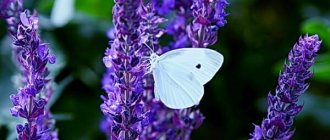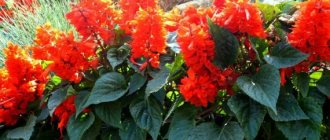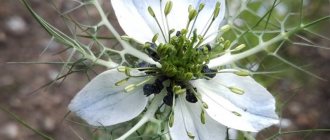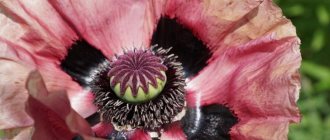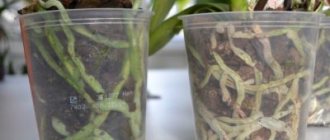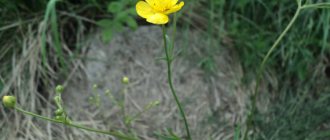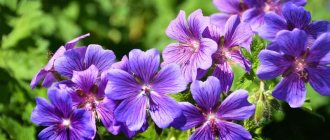History of selection
Sparkling sage (Salvia splendens) is also called shiny salvia. This is a cultivated perennial plant from the genus Sage (Salvia). Salvia was known back in ancient times - the first descriptions are found among the ancient Greek doctors Hippocrates and Dioscorides.
However, some species were discovered relatively recently. For example, the fortune teller sage (Salvia divinórum) became known only in 1962. This species was discovered by researchers Gordon Wassonche and Albert Hofmann, who went to the mountains of Mexico.
Subsequently, based on different types of sage, many varieties were bred for decorative use, including sparkling salvia. In nature, it is found in the tropical zone of Brazil. The plant is very heat-loving, so in cold climates it is grown mainly as an annual flower.
Salvia sparkling prefers warm, sunny places and does not tolerate severe frosts.
Description of Salvia sparkling and characteristics
Sparkling sage is a perennial flowering shrub. Densely covered with leaves arranged oppositely (opposite each other). They are ovoid in shape, veins are visible on the surface, and grow on petioles. The edge of the leaf blades of Salvia sparkling is solid, the size is medium (2–3 cm wide). The outer side is a rich green color, the underside is lighter.
The shape of the sparkling salvia bush is reverse pyramidal. The plant is compact and does not grow wide, so sage is usually planted densely, with an interval of 15–25 cm. The root system of the sparkling salvia is very powerful and well branched. The bush confidently occupies space and receives moisture and nutrients from the soil.
The flowers of sparkling salvia are large, irregularly shaped, with a double perianth. They are collected in large inflorescences-tassels, their length is 15–25 cm. Each of them contains many small flowers - from 30 to 90. Often pubescence appears on the peduncles of the same color as the petals. The color is predominantly bright red, although there are other colors (depending on the variety of sparkling sage):
- white;
- pink;
- coral;
- purple.
Flowering continues for a very long time - from mid-June to early October (ends with the onset of the first frost). Salvia brilliantis adorns the garden all season long. Flower growers also appreciate this plant for its low maintenance requirements.
Fruits – 4 nuts with seeds. They can be collected and stored for 3–5 years. If the variety is varietal, it is easy to grow at home (sowing seeds for seedlings). If it is a hybrid, then it is not advisable to collect seed material: it will not produce flowers. Therefore, seeds should be purchased from stores or suppliers.
Height of Salvia lucidum
Salvia brilliantis (pictured) is a low, compact bush, reaching a height of 20 to 70–80 cm. The culture is used to decorate any flower bed, create a lush flower carpet or frame a path.
Sparkling sage fits harmoniously into any flower garden
Description and photo of the sage plant (salvia)
In the photo Salvia Reddy Bright ed
In nature, salvia is a perennial plant, but in our gardens it is grown as an annual or biennial. Some varieties can easily overwinter in not very cold and snowy winters and bloom the next year.
Salvia bushes can grow up to a meter in height. They have tetrahedral, ascending or erect stems, on which whole or dissected leaves are located oppositely. The leaf blades are dark green above and whitish below.
At the ends of the stems, paniculate or spike-shaped inflorescences up to 20 cm long are formed. They consist of flowers that can be of very different colors. In cultivation, the most commonly grown salvia is sparkling or shiny with bright flowers. Wild species can range in color from white to bright purple.
After flowering, the bush produces fruits consisting of four nuts. After about a month, sage seeds ripen in them, which can be collected and stored. Seeds remain viable for five years.
Varieties of Salvia shiny
There are more than 10 varieties of sparkling sage, which are successfully used to decorate the garden. The most popular varieties are Karabiner, Scarlet, Dwarf mix and others.
Carabinieri
Salvia sparkling Carabiner is a low-growing shrub (up to 25–30 cm) with bright red flowers. A herbaceous plant with a tetrahedral stem and tubular inflorescences. This variety of sage is used in dense plantings (the interval between plants is 20 cm) - in ridges, in flower beds, and for decorating borders.
Read more Perennial sage (salvia): description, photo of flowers, sowing, care The Karabiner variety attracts attention with bright inflorescences
Scarlet
Salvia sparkling Scarlet is a relatively tall bush, quickly growing up to 60 cm. It is characterized by a long flowering period, tolerance to drought and short-term cold snaps, and other unfavorable conditions. Plants are used to decorate paths, planted in flower beds and garden beds. They can also be grown in flower pots.
In the photo of the Salvia sparkling Scarlet flower, you can see that the flowers are painted in a coral, light red hue.
Red flowers look harmonious against the background of rich green foliage.
Dwarf mix
Salvia sparkling Dwarf mix is a low-growing, densely leafy shrub (up to 25 cm) with numerous inflorescences of various colors:
- bright red;
- purple;
- lilac;
- orange;
- white.
Flowering begins in the second half of July and continues until autumn (until the onset of the first frost). Looks very impressive in any planting. The culture is used in mixborders, front flower beds and borders. It is recommended to plant such sage quite densely - with an interval of 20–25 cm. In this case, the seedlings are transferred to open ground only in early June, since the plant is heat-loving.
Important! This variety of sparkling salvia prefers fertile and light soils.
If the soil is clayey, when digging, add coarse sand 200–300 g per 1 m2.
The brilliant sage variety Dwarf mix produces lush flowers of various colors
Dwarf ed
Salvia sparkling Dwarf red is a small, compact bush that grows up to 30 cm. It is densely covered with leaves and has lush panicle inflorescences of bright red color. The number of buds is very large, so sage looks attractive.
Salvia Dwarf red is usually used to frame paths, borders, as well as in borders and main flower beds in the garden.
Bonfire
Salvia sparkling Bonfire (bonfire) is a densely leafy bush that grows up to 60 cm by mid-summer. It produces many lush racemose inflorescences of bright red color. When planted tightly, it looks like a “bonfire”, which is how the variety got its name.
Flowering of the variety Koster is abundant and long - from mid-June to the end of September
Salvia Charm cherry
Salvia sparkling Charm cherry
- compact bush. Grows up to 30 cm. The flowers are a delicate cherry color, which is how the variety got its name. The racemose inflorescences are very large - 15–25 cm long. Flowering lasts all summer and part of autumn, if the season is warm - until October. Used to decorate ridges and ceremonial flower beds. This variety of shiny sage looks especially beautiful against the backdrop of well-groomed lawns.
Cherry salvia decorates the garden with attractive flowers for 3-4 months in a row.
Fire of Prometheus
Another variety of sparkling sage is Prometheus's Fire (Salvia splendens St. John's Fire). This is a small, graceful bush, reaching a height of 20–30 cm (sometimes up to 15 cm). The flowers are beautiful, neat, red. They enliven the space and decorate even inconspicuous corners in the garden. Flowering is very long - until the first frost.
The Prometheus Fire variety can be used not only in the garden, but also for growing at home
Splendes Pink
The Splendens pink variety of sparkling sage is very popular for its attractive pink and soft lilac flowers that appear from the first half of July until October. The bushes are small, compact, grow up to 30 cm. Densely covered with rather large bright green leaves. Salvia sparkling pink loves sun and good moisture, so it needs regular watering.
Lush flowers of Salvia Pink look spectacular against the backdrop of large bright green leaves.
Vesuvius
This variety of sparkling crop is distinguished by lush panicle inflorescences of bright red color and large leaves up to 9 cm wide and up to 10 cm long. The bushes are compact, quite tall - up to 45–50 cm.
Read more Perennial sage (salvia): description, photo of flowers, sowing, care
The shiny salvia variety Vesuvius begins to bloom later than everyone else - in early August
Salvia or magnificent sage
Salvia is an amazing name for a plant; behind this “name” is hidden the familiar name sage. The enchanting, slightly intoxicating aroma of the plant envelops, fills the world around us, absorbs and conquers all the obstacles that arise in its path.
Salvia and its historical milestones
The name “salvia” will seem at least strange to most. The thing is that this spice, which is a medicinal plant, is called sage, and as an ornamental plant - salvia.
According to one version, the name “salvia” comes from the Latin salvare, meaning “to save.” And this is the real truth, because the plant is a real savior, and humanity has known about its medicinal properties for several centuries. Salvia officinalis was cultivated back in the days of the Roman Empire, and this miracle plant was used to treat various colds, respiratory diseases, toothache and many others.
Another version says that the name “salvia” also comes from the Latin “salvus”, which means “to be healthy”. Our ancient ancestors said that if you plant sage in the garden, then the need for doctors will disappear.
By the way, not only healers and healers were delighted with sage, but also poets. The latter composed songs and odes about this plant.
"Anatomy" of a plant
Some species and varieties can grow from 30 cm to 1.5 m. The stem of salvia is tetrahedral, the leaves are arranged in opposite pairs, sage flowers can be of different shapes and colors (it all depends on the type and variety). Flowers are red, lilac, blue, yellow, purple, white or pinkish.
Features of cultivation
It is very difficult to give a general recommendation for the cultivation of salvia, since this plant has many species, and these species differ from each other. One species loves the sunny side, another loves shaded places, and the third loves partial shade. There are species that are drought-resistant, and there are also those that love moisture. But despite these differences between species, plants have much in common.
The cold-resistant species feels equally good both in the penumbral zone and in the sunny zone. Heat-loving salvia, on the contrary, can develop normally only in areas where sunlight predominates. This species is not so demanding on soil moisture and is the most drought-resistant. This should be taken into account when planting this plant.
Site selection
When choosing a site for planting, you must remember that all salvias (the type does not matter) like to grow on light sandstones, but rich in humus. And one more thing, this plant easily crosses with each other. Hence the conclusion: when choosing a site for planting, it is best to place different types of this plant as far as possible from each other.
Salvia propagation
- Cuttings
Perennial salvias are very easy to propagate from half-woody cuttings; propagation can be carried out by cuttings throughout the entire season. To do this, cuttings about 15 cm long are cut. They are rooted in a container of water, slightly covered from bright sunlight. Roots, as a rule, appear after 14-16 days, and the plant is planted in the ground literally 7 days after the roots appear.
- Air layering
Salvia can also be propagated by air layering. To do this, it is enough to press the branch to the ground, strengthening it with a metal bracket, and after a few months you will notice the appearance of new roots on the cuttings. After roots have formed on the layering, the root can be carefully cut off from the “parent” bush and planted in another place.
Seed sowing time
All species can be easily propagated by seeds. In late October, sage seeds are sown in beds (preferably small ones) to a depth of about 10 cm and left until spring. With the onset of spring, the young shoots are transplanted to a permanent site. You can sow seeds in the spring, but only at the beginning of March.
How seeds are sown
- We take a small container, fill it with light nutritious soil (a universal soil mixture for seedlings may be suitable here) and when the seedlings have a pair of true leaves, we pick (transplant).
- Picking is carried out in pots with a diameter of about 7 cm (we plant one plant at a time).
- In mid-April, we begin to harden off the sage seedlings a little at a time; for this purpose we take them out into the greenhouse.
- We plant sage seedlings in open ground only in early June. It should be noted here that young plants cannot tolerate even light frosts.
Salvia care
All types of salvia cannot grow in soil where there is stagnant moisture, so when watering, try not to overdo it.
When growing this plant as a perennial, be prepared for formative pruning, so you can give it any shape you need. In addition, pruning allows you to form the desired shape of the bush; they help the salvia not to expose or stretch the stem. Pruning promotes massive growth of shoots, and the bushes become more luxuriant and decorative as a result of this technique.
During the flowering season, it is advisable to promptly remove faded flowers.
Features of care after flowering
After flowering ends, salvia still needs care as before. At the end of the season (around October), the plant needs to be trimmed, after which it should be covered with a layer of garden compost, covering the growth nodes quite generously. On top of a layer of compost (this applies to heat-loving varieties), it would not be superfluous to cover the perennial salvia with a layer of dry foliage.
Unfortunately, this plant cannot always be preserved in a flower garden; for this reason, in the fall, part of the rhizomes of heat-loving salvia are dug up and put into the cellar, where the plant overwinters well.
Salvia - types and varieties
The Salvia genus belongs to the Yasnotaceae family, which has a huge number of species - about 900, and therefore this plant is considered the most widespread on earth. Salvia can be different, it can look like a shrub or subshrub, an annual or biennial plant, and even be a perennial.
Salvia officinalis - Salvia officinalis
This is a medicinal, ornamental plant and a unique spice of its kind. It has the appearance of a subshrub or herbaceous plant, the maximum height is about 70 cm. The medicinal part of Salvia officinalis is the leaves and flowering tops of the plant.
Salvia sylvestris - forest salvia
This is an ornamental cold-resistant plant. It blooms in the middle zone in June. The flowers of the plant are blue and lilac-violet. This species is considered the ancestor of many new varieties and hybrids, such as Blauhugel, Schneehogel, Lye End, Rose Queen and Rhapsody in Blue.
Salvia nemorosa
The species is considered the most unpretentious and cold-resistant representative of its genus. There are many varieties of oak sage, the brightest ones being those with pinkish (Plumosa and Rose Wine) and purple (Caradonna and Marcus) flowers.
Salvia pratensis - meadow salvia
This species produces beautiful white (Swan Lake) or rich blue-violet (Salvia pratensis) flowers. Mass flowering of meadow salvia occurs at the end of June or at the beginning of July.
Salvia verticulata
This is an incredibly beautiful, cold-resistant plant with bright purple flowers. Due to its exceptional decorative properties, it fits perfectly into landscape design. This species blooms throughout the summer. Mass flowering of Salvia whorled occurs from the beginning of July until September.
Salvia transsylvanica
This is one of the types of cold-resistant salvia. This species thrives in partial shade. It blooms from mid-June until the end of September. The flowers are lilac and incredibly beautiful.
Salvia azurea - blue salvia
The inflorescences are soft blue, they surprise with numerous small flowers. The flowering of the plant begins in July and lasts until October, which makes this variety very popular. In addition, among the plant varieties there is a variety called Salvia azurea grandiflora with large flowers.
Salvia uliginosa - marsh salvia
Came to us from South America. This giant plant is relatively heat-loving. The height reaches 2 meters. Salvia marsh is considered the most beautiful representative of the species. The plant has small, about 7 centimeters, carved elongated leaves along the edge. The flowers of the plant are bright, blue-blue. Flowering begins in August and lasts until October.
Well, here we are, talking about cold-resistant types of salvia. It's time to talk about heat-loving plants.
Salvia splendens - sparkling salvia
This species is very popular among gardeners. This perennial plant, cultivated in the middle zone as an annual, amazes with its rich colors. The flowers are bright orange and red-violet. Sparkling salvia blooms from June until the first frost.
Salvia coccinea - red salvia
This is a biennial plant that loves heat and moisture. For abundant watering, it will thank you with beautiful lush flowers. Flowering of red salvia begins in August and continues until the first frost. The flowers come in the following colors: red, pink or white.
Salvia microphylla
This species is also called myrtle. The plant is a heat-loving shrub. The homeland of the plant is Mexico. In mid-summer, small-leaved salvia looks like a luxurious carpet, with bright red or yellow, red-white or purple colors. The flowers are small and bloom until the first frost. Salvia small-leaved surprises not only with its bright array of flowers, but also with its oval-shaped leaves of light green color. If you crush the leaves in your hand, you can feel a pleasant aroma very similar to the aroma of blackcurrant.
Salvia sclarea - clary sage
This plant is perennial or biennial and reaches about one meter in height. Clary sage leaves are large and oval-rounded with a pronounced aroma. The flowers are painted in a variety of shades. Color ranges from pink and blue to creamy purple. This type of sage can reproduce by self-sowing.
Salvia regla - mountain salvia
Salvia montana is native to Texas. This plant has the appearance of a heat-loving subshrub, growing much wider than it is tall. Some mountain salvia plants sometimes reach a width of up to one meter. Salvia regla blooms with beautiful red flowers. Flowering begins at the end of August, flowering ends in mid-October.
Salvia elegans - slender salvia
This plant lives up to its name. Tall (about 1 m), slender stems are literally covered with bright red beautiful flowers, the shape of which resembles a funnel. The leaves of the plant also amaze with their interesting aroma - they give off a delicate fruity smell. For example, if you crush the leaves of Salvia Tangerine Sage in your hand, they will smell like tangerine, and the leaves of Scarlet Pineapple have a pineapple smell.
Reproduction methods
Sparkling salvia can be propagated by seeds and cuttings. The first case is more labor-intensive, but by growing seedlings yourself, you can speed up the start of flowering. It is easier to propagate a sparkling plant using cuttings. In this case, the offspring will retain all the characteristics of the mother bush.
Propagation by seeds
Seedlings are grown from Salvia sparkling seeds. They should be sown in February or no later than the first days of March. The soil can be used either store-bought or your own. Initially, sparkling salvia seeds are planted in common containers, and then planted in individual pots.
At the first stages, seedlings are grown in greenhouse conditions (moisturized abundantly, covered with film), then at room temperature. Salvia sparkling is transferred to open ground at the end of May or at the beginning of June. In the south, work can be carried out 2-3 weeks earlier.
Propagation by cuttings
It is better to propagate sparkling green salvia by cuttings at the end of summer, when the plant is sufficiently strong and the main wave of flowering has already passed. Sequencing:
- Select several shoots and cut cuttings 10–15 cm long.
- Place in a container with water, cover from direct sunlight.
- After a few days, inspect the seed: if any leaves of the brilliant sage begin to fade, they need to be removed completely or partially.
- 2 weeks after receiving the cuttings they give roots. At this point, they can be transplanted to a permanent place or into a pot.
- In the first days, it is advisable to shade the plants from the sun, regularly water and spray them. In the future, care is standard, as for an adult salvia.
Growing salvia through seedlings
The annual and biennial sage plant is propagated by seeds, and perennial salvia can additionally be propagated by cuttings and dividing the bush.
When to plant sage seedlings
When to sow salvia this year according to the lunar calendar you can study here.
Perennial species of sage are sown in the ground in spring or autumn, and seeds are planted for seedlings from mid-February to early March. Salvia sparkling or shiny is grown in seedlings.
The procedure for planting salvia seeds for seedlings is as follows:
- Prepare seedling containers and fill them with loose, moist soil.
- The seeds are planted to a depth of approximately 2 mm, and the plantings are sprayed with warm water from a spray bottle.
- The containers are covered with plastic film on top, resulting in the formation of a greenhouse in which the soil will not dry out.
- Crops should be kept warm at a temperature of about +25 degrees. When caring for them, the film is removed every day to ventilate the soil and check its moisture. The drying soil is moistened with a spray bottle.
Seedling care
The photo shows salvia after picking.
In about two to four weeks, seedlings will appear. To ensure that the seedlings form a strong root system, the bushes are pricked twice before planting in open ground.
The first picking is made after two true leaves appear on the seedlings. They are planted from each other at a distance of 5 cm, using a larger seedling container.
The seedlings are picked for the second time three weeks after the first picking procedure. In this case, each bush will need an individual pot with a diameter of 10-12 cm.
In order for the plants to bush better, when the third or fourth true leaf appears, their tops are pinched .
In mid-spring, at night, the seedlings are exposed to a closed loggia with an air temperature of up to +10 degrees. In this way, the plants are hardened off and prepared for planting in open ground. If there is no loggia, hardening can be done by ventilating the room or by taking the seedlings outside during the day in warm weather.
You will be interested to know: Growing aquilegia from seeds through seedlings: when to plant, planting and care, photo of the catchment area
How to grow and care for salvia sparkling
In the climatic conditions of Russia, sparkling salvia is obtained from seedlings so that the flowering time occurs in the summer. To do this, you should determine the sowing time in advance, prepare the seed and ensure normal conditions for growing.
Sowing time
Salvia sparkling seeds are planted in February, since the plant begins to bloom 2.5-3 months after the appearance of the first shoots. The specific period depends on the climatic characteristics of the region:
- In the middle zone, seeds are planted in mid-February.
- In the Urals, Siberia and the North-West - in early March.
- In the southern regions - in early February.
Soil and seed preparation
For growing sparkling salvia seedlings, universal soil, which can be purchased at the store, is suitable. You can also make the mixture yourself using garden or forest soil with coarse sand and peat (in equal quantities). An alternative option is compost, peat and coarse sand (1:1:0.5). The soil should first be disinfected - for example, keep it in the oven for 15–20 minutes at a temperature of 150 degrees or put it in the freezer for several days.
You can make your own shining sage seeds by collecting them and saving them from last season, or you can purchase them at the store. Before planting, they are placed on gauze moistened with a weak solution of potassium permanganate (1%), then kept for several hours in a stimulator (Epin, Zircon, aloe juice with water in equal quantities).
Sowing Salvia shiny seeds and caring for seedlings
Instructions for planting Salvia sparkling seeds:
- A layer of small stones is placed at the bottom of the box or container.
- Fill up the soil.
- Water generously or spray with a spray bottle.
- Take a small pinch of seeds (they are very small) and scatter them over the surface.
- Lightly press them inwards - it is not necessary to sprinkle them with soil.
- Cover the container with film with holes or glass and place in a warm place (25–26 degrees).
Read more Perennial sage (salvia): description, photo of flowers, sowing, care
Salvia sparkling seedlings need to be pruned after two or three pairs of leaves appear
Important! If there is a lack of sunlight, be sure to organize illumination with a phytolamp until the total daylight hours are 14–15 hours.
Periodically, the greenhouse with sparkling salvia seeds is ventilated and moistened, and accumulated water is removed from the surface of the lid. As soon as 2-3 pairs of leaves appear, seedlings are planted in individual containers; plastic glasses are suitable. The shoots must be removed very carefully so as not to damage the roots.
After transplantation, sparkling sage seedlings are fed with complex fertilizer. They can be grown in moderately warm conditions - temperature 21–23 °C.
Planting in open ground and subsequent care
Salvia prefers well-lit places, but light shading is also allowed. The planting site should be located on a hill, and not in a lowland where rain moisture accumulates. In this case, the soil should be quite fertile. If the soil is depleted, humus or rotted manure should be added when digging - 2–5 kg per 1 m2.
Planting Salvia sparkling is easy. Dig several shallow holes at a distance of 15–30 cm from each other (depending on the variety and design features), lay a layer of small stones, root the seedling and cover it with fertile soil. Then water and mulch abundantly.
Further care:
- Watering as needed (once every 10 days in the absence of rain).
- At the stage of bud formation, they are fed with complex fertilizer.
- After the end of the first wave of flowering, the peduncles of sparkling salvia are cut off.
- The soil is periodically loosened and weeded if necessary.
- To keep the soil moist longer, it is mulched with humus, peat, sawdust or other material.
For lush flowering, sparkling salvia needs to be fed once in mid-June.
Planting salvia
It is difficult to give general recommendations for growing salvia, because this plant has many species that differ so much from each other: some love the sun, others love shade, others love partial shade, some are drought-resistant, others love moist soils, and so on.
But despite this, there are many similarities between the species. So, all cold-resistant salvias feel equally good not only in partial shade, but also in the sun. Heat-loving species, on the contrary, can grow normally only in sunny areas, they are not so demanding on soil moisture and are more drought-resistant, keep this in mind when planting. When planting, place different species as far apart as possible. When choosing a place for planting, remember that all of them, regardless of the species, prefer to grow on light sandy soils, relatively rich in humus. And I almost forgot, salvias very easily cross with each other, which is why they are not suitable for further propagation by seeds. Therefore, try to place different types of salvia as far from each other as possible.
Pests and diseases
Salvia sparkling can suffer from the following diseases: blackleg, fusarium, root rot, late blight.
In summer, bushes can be parasitized by various pests, including aphids and thrips. As a preventative measure, monitor the watering rate, and also treat salvia seedlings with fungicides after transplanting into the ground. For this you can use any drugs:
- "Skor";
- "Ordan";
- "Fitosporin";
- "Maksim";
- "Fundazol" and others.
Insecticides will help destroy insects:
- "Aktara";
- "Fitoverm";
- "Green Soap";
- "Decis";
- "Confidor".
Salvia sparkling is processed late in the evening, in dry and windless weather.
Diseases and pests
Salvia is rarely affected by diseases, and the pests that can live on it are mites, aphids, thrips or whiteflies. Snails and slugs love to eat the tender foliage of the plant.
Pests are destroyed by spraying the bushes with special insecticidal preparations. Slugs or snails are collected by hand.
Bright salvia flowers go well with decorative foliage and flowering plants. They can be used to create multi-tiered flower beds and flower beds with complex floral patterns. The unpretentiousness of flowers allows them to be planted in parks and city flower beds. Decorative sage can be planted in a garden container or box and used to decorate a balcony. In the garden it can be grown almost anywhere, the main thing is to show your imagination.
Application in landscape design
Salvia sparkling looks good in the garden - both in front flower beds and in remote areas. This flower is often used in mixborders, to design paths, zoning a flower garden, near the entrance, gazebo and other centers of attraction.
Below are several options for using sparkling sage in landscape design:
- For decorating paths.
- For decoration of nondescript places in the garden.
- Landing near the house.
- Sparkling sage in combination with other ornamental plants.
- In the central flowerbed in the garden.
- Single planting of brilliant sage.
- Sparkling salvia in a flowerpot.
Planting salvia in a flower bed
Salvia seedlings are planted in flower beds quite late - not earlier than June 10. The flower spends almost half of the growing season in a pot.
The culture prefers sunny, unshaded places. There should also be no stagnation of water. The place for salvia is usually not planned in advance, so the seedlings are planted in place of the bulbous plants (tulips, daffodils, etc.) that are being dug up at the time or those that have already lost their charm, such as pansies.
Salvia is not particularly demanding on the composition of the soil, but it is still recommended to loosen heavy soils with sand.
Advice. It is not recommended to heavily fertilize the area where salvia will be planted with humus. In this case, the root system will develop well, and there will be few flowers.
Since the plants are planted already quite large, holes of a suitable size should be prepared for planting. The required interval is 20-30 cm. The dug holes are well filled with water, and the salvia is transferred into the resulting dirt along with a lump of soil from the pot. With this method of planting, the plant is not injured, quickly grows and begins to bloom.
Salvia flowers of different shades
Caring for sparkling salvia is quite standard:
- watering as needed;
- regular loosening of the soil, removal of weeds;
- fertilizing several times during the season with complex mineral fertilizer.
Salvia practically does not bloom in shade. Therefore, it needs to be planted away from tall plants.
Advice. A flowerbed consisting only of shiny salvias of one or several colors will look very beautiful. Also, this plant looks great in the background in border plantings next to low-growing marigolds and annual phlox.
